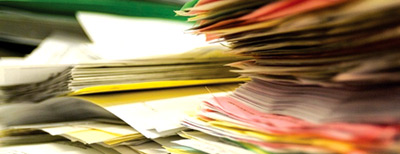Printing invention allows paper to be reused up to 50 times
New dye coated paper and water-filled cartridges can be used in a
standard inkjet printer, cutting paper waste.
 Anyone who's balked at the sight of bags of wasted office paper or
cursed the high price of ink cartridges will appreciate a new Chinese
printing invention that uses water instead of ink, allowing a single
sheet of paper to be reused up to 50 times. Anyone who's balked at the sight of bags of wasted office paper or
cursed the high price of ink cartridges will appreciate a new Chinese
printing invention that uses water instead of ink, allowing a single
sheet of paper to be reused up to 50 times.
The paper is coated with a hydrochromic 'switchable' dye, which
colours when it becomes moist. The technology works with standard inkjet
printers: ink cartridges are simply replaced with water-filled ones.
Print disappears after 22 hours, and the paper can then be reused.
The technology could dramatically reduce waste and deforestation,
says Dr Sean Xiao-An Zhang, who led the Jilin University scientific
team. "Around 40 percent of office prints are single-use. This
technology will help those who prefer to read on hard copy once and
discard, and could dramatically reduce waste from daily newspapers."
With the paper industry responsible for 35 percent of deforestation,
slashing wastage from daily newspapers would be an environmental coup.
But is 22 hours really a long enough lifetime for a print-out? The
print is temperature-sensitive too: it will disappear more quickly in a
hot environment.
Julian Long, National Key Account Manager at Arjowiggins Graphic, an
environmental paper manufacturer, also points out that: "To assess the
environmental benefits, we have to look beyond paper reuse and
investigate the impact on the environment of the chemicals used to treat
the product."
However, Zhang insists the chemicals are non-toxic and the paper
recyclable.
In the office, a switch between water or ink cartridges and normal or
hydrochromic paper would need to be incorporated into existing printer
mechanisms. Nevertheless, the paper, although not yet in production,
should only cost 5 percent more than regular paper, according to Zhang.
While the low cost of water compared with ink would reduce overall costs
to around 1 percent of inkjet printing.
This may be the biggest obstacle - the high profits made on ink
cartridges are likely to be something the printer companies will make
every effort to hang on to. Also, laser printers are more common in
offices due to cheaper price per print-out compared with ink jet models,
which could further limit uptake of the technology.
- (Sue Wheat) Green Futures
|

